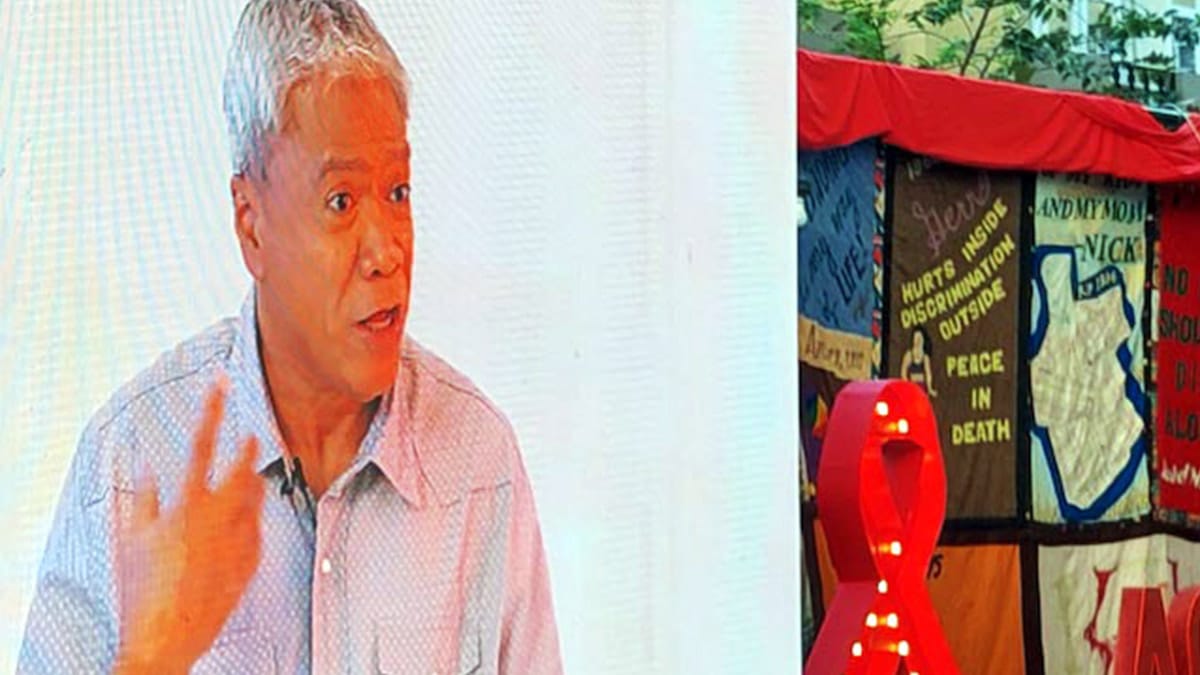(First of two parts)
MANILA, Philippines — In his first anonymous media interviews back in the 1990s, Roberto Ruiz preferred to be called “Fernando” in sharing his story as a person living with the human immunodeficiency virus (HIV), since he was afraid of being ridiculed because of his medical condition.
“The Inquirer Magazine had an article about me. I kept a copy,” he said.
Ruiz is one of the longest-living persons living with HIV (PLHIV) in the Philippines. He was in his 20s in 1993 when he was first diagnosed with his condition, and he would experience the side effects of the first medicines made available globally to slow down the progression of HIV into acquired immune deficiency syndrome or AIDS, the end stage of the infection.
READ: HIV cases among Filipinos continue to rise, says DOH
Today, at almost 60, Ruiz said the culture of stigma and discrimination toward people like him has changed—but only slightly—because many PLHIVs still face scorn and are still reluctant to seek medical advice and treatment.
‘Key populations’
According to the Joint United Nations Programme on HIV and AIDS (UNAIDS), stigma refers to a society’s negative views and unfair attitudes regarding persons coping with a certain disease.
Dr. Louie Ocampo, country director of UNAIDS-Philippines, said stigma started being attached to HIV because it is highly infectious, transmitted through unprotected sexual contact and through the blood via transfusion and drug use.
He said people in “key populations”—that is, people highly vulnerable to infection due to behaviors and the environment that they work in—experience the most stigmatization. They are males having sex with males, transgender women, sex workers, trafficked women and girls, people who use or inject drugs, people deprived of liberty, female partners of those in key populations, and migrant workers.
“HIV is viewed negatively because people fear the social prejudice against the condition that may be damaging to PLHIVs or [those] suspected of being infected,” Ocampo said.
Ruiz said “HIV testing is now better, but there is not enough dissemination of information.”
“There is a law (Republic Act No. 11166 or the Philippine HIV or AIDS Policy Act), but it is not popularized. [I hope that], along with the testing, … organizations advoca[ting] awareness and prevention should do more,” he said.
Faces in the campaign
There is no cure for HIV. But in 1995, Ruiz took part in the first clinical trials on the efficacy of antiretroviral drugs that help control the increase of the virus, fight symptoms and improve quality of life.
The Department of Health (DOH) at the time was also looking for PLHIV volunteers who were willing to put a face to its campaign promoting their compassionate treatment and encouraging Filipinos to get tested.
Ruiz volunteered in that campaign, saying that he recognized the responsibility that goes with representing others also with his condition.
It was Dolzura Cortez who first came out publicly as an HIV case. Her story was also featured in the Inquirer and was made into a movie starring Vilma Santos. Cortez died in 1992.
The most popular among the early faces of HIV was Sarah Jane Salazar, who came out publicly in 1994 in support of the awareness campaign of the DOH. She died in 2000.
Just last May, actor Adrian Lindayag came out publicly with the disease he had been coping with for seven years.
Lindayag disclosed his condition during a news conference on the rock musical “Rent,” where he played the role of “Angel,” a PLHIV drag queen living with prejudice.
“I’m standing with my community to use my passion,” Lindayag said.
‘Half my life’
Ruiz, a founding member of Positive Action Foundation Philippines Inc., one of the first PLHIV organizations in the country, is proud to consider as one of his achievements his involvement to promote better access to treatment.
“We fought and persevered until the next generations of PLHIVs had access to treatment and better health care,” he said.
Because he is no longer afraid to identify himself as a PLHIV, Ruiz joined an advocacy video launched in observance of World AIDS Day on Dec. 1 last year.
“I’ve been living with the virus half my life,” he said in the video titled “Visibility is Key,” a joint project of UNAIDS and advocacy organizations TLF-Share, Pilipinas Shell Foundation, Action for Health Initiatives and Gugma PR.
